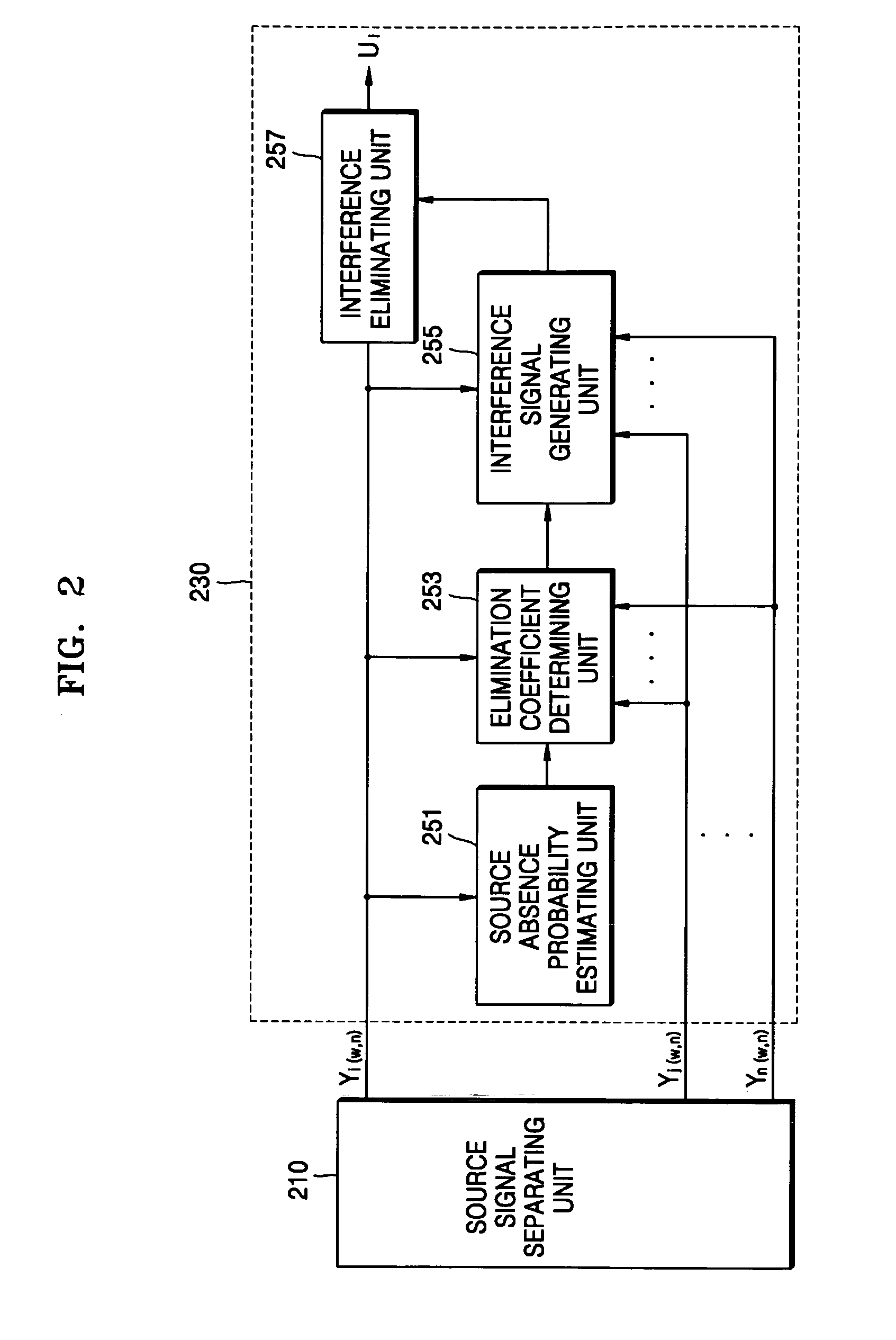Elimination of cross-channel interference and multi-channel source separation by using an interference elimination coefficient based on a source signal absence probability
a cross-channel interference and probability-based technology, applied in the field of source separation, can solve the problems of low performance in a real environment, musical noise still remains due to spectral components below zero, etc., and achieve the effect of removing cross-channel interferen
- Summary
- Abstract
- Description
- Claims
- Application Information
AI Technical Summary
Benefits of technology
Problems solved by technology
Method used
Image
Examples
Embodiment Construction
[0022]Reference will now be made in detail to embodiments of the present invention, examples of which are illustrated in the accompanying drawings, wherein like reference numerals refer to the like elements throughout. The embodiments are described below in order to explain the present invention by referring to the figures.
[0023]FIG. 1 illustrates waveforms for describing a principle of a source separation according to an embodiment of the present invention. In FIG. 1, it is assumed that, for example, two source signals are mixed (i.e., two channels are used). S1 and S2 denote original source signals. When two microphones are used, waveforms 111 and 113 depict mixtures (i.e., S1+S2) input to each of the two microphones, respectively. Waveforms 131 and 133 depict first and second channel signals S1+s2 and s1+S2, respectively, as a result of applying a source separation algorithm such as a blind source separation (BSS) to the mixtures, where capital letters designate primary source si...
PUM
 Login to View More
Login to View More Abstract
Description
Claims
Application Information
 Login to View More
Login to View More - R&D
- Intellectual Property
- Life Sciences
- Materials
- Tech Scout
- Unparalleled Data Quality
- Higher Quality Content
- 60% Fewer Hallucinations
Browse by: Latest US Patents, China's latest patents, Technical Efficacy Thesaurus, Application Domain, Technology Topic, Popular Technical Reports.
© 2025 PatSnap. All rights reserved.Legal|Privacy policy|Modern Slavery Act Transparency Statement|Sitemap|About US| Contact US: help@patsnap.com



